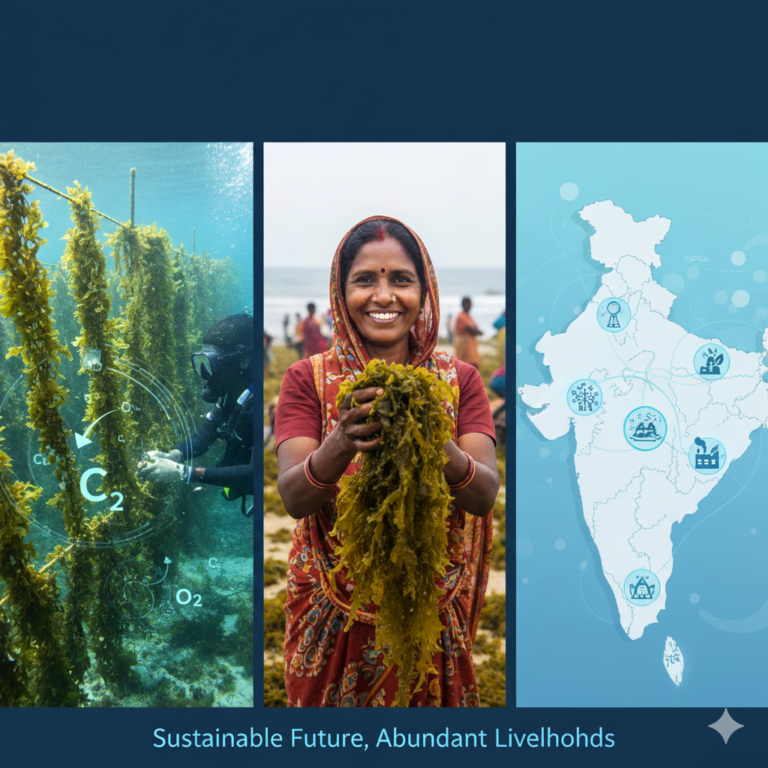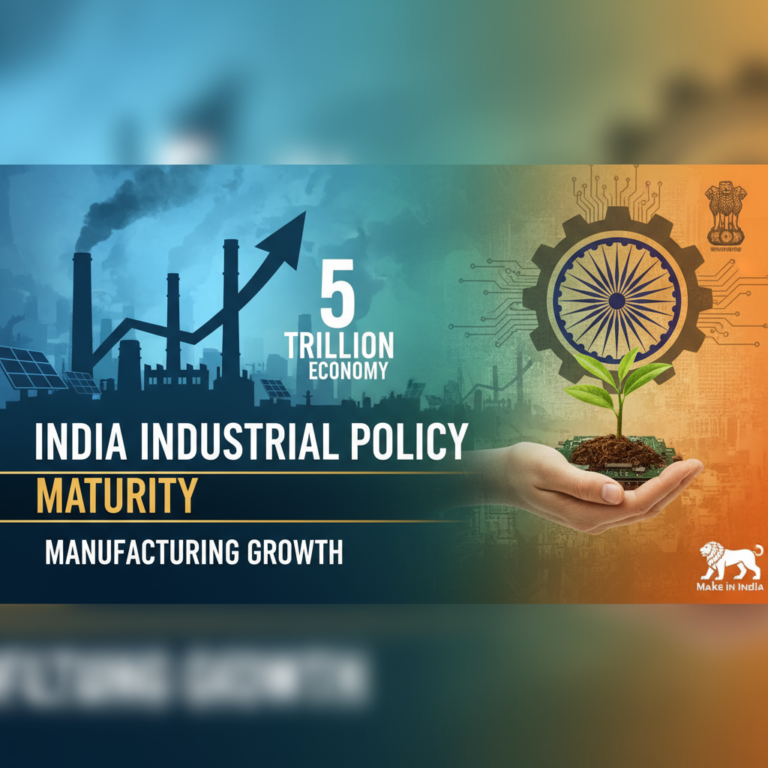Key Highlights
- India aims to produce 5 million metric tonnes (MMT) of green hydrogen annually by 2030, boosting energy security and self-reliance.
- Uttar Pradesh’s launch of a green hydrogen plant marks a major step toward India’s clean energy ambitions and industrial modernization.
- The National Green Hydrogen Mission could cut 50 MMT of CO₂ emissions and save ₹1 lakh crore in fossil fuel imports each year.
- Green hydrogen adoption faces hurdles: high costs, technology gaps, and massive renewable energy needs.
- Public–private partnerships, advanced R&D, skill-building, and global alliances are vital for success.
Introduction
Can India, one of the world’s fastest-growing economies and energy consumers, pioneer a new era of clean and resilient energy? Uttar Pradesh, India’s most populous state, is making bold moves. With the rollout of its Green Hydrogen Policy in early 2024, UP joins the national momentum set by India’s ₹19,744 crore National Green Hydrogen Mission. This is more than an energy story—it’s a vision for economic transformation, global competitiveness, and climate action.
Background
The Promise of Green Hydrogen
Green hydrogen—created by splitting water using renewable energy—has won global attention as the foundational fuel of a decarbonized future. Traditional hydrogen, made from fossil fuels, pumps out CO₂. Green hydrogen, by contrast, can fuel steel mills, fertilizer plants, and refineries with almost zero emissions, aligning with India’s Net Zero 2070 commitment. gh2
India’s 2023 National Green Hydrogen Mission (NGHM) set a bold target: produce 5 MMT of green hydrogen annually by 2030. This could save ₹1 lakh crore per year in fossil fuel imports and cut 50 MMT of CO₂ emissions. Recognizing its industrial prowess, Uttar Pradesh launched a specific state policy in March 2024 to create hydrogen hubs, attract investments, and gain first-mover advantage. pib
Core Analysis
Social and Economic Impacts
Energy Security and Growth:
Reducing reliance on energy imports strengthens India’s economy. UP’s policy catalyzed ₹1.15 lakh crore worth of investment proposals from 17 leading firms, targeting 20,000 jobs in clusters like Gorakhpur, Jalaun, and Bulandshahr. Major players, including Acme Cleantech and Welspun Group, plan multibillion-rupee facilities—making UP a potential green hydrogen hub. energy.economictimes
Regional Advancement:
UP’s policy leverages its industrial corridors, incentivizing hydrogen-linked manufacturing and supporting the “Atmanirbhar Bharat” self-reliance drive. Land, electricity duty, and capital subsidies motivate local and global investors.
Clean Jobs and Upskilling:
Hydrogen plants and electrolyser manufacturing open up new “green jobs.” The rise of a skilled workforce in engineering, project management, and renewable integration is essential for national energy literacy.
Environmental and Ethical Considerations
Climate Action:
Green hydrogen can decarbonize energy-intensive industries and fuel long-haul transport, helping India pursue its Net Zero 2070 pledge. If targets are met, CO₂ emissions could fall by 50 MMT each year, improving urban air quality and public health.
Sustainable Growth:
The policy aligns with SDG 7 (clean energy) and SDG 13 (climate action), placing ethics and sustainability alongside profits—a strong model for other developing countries.
Political, Strategic, and Global Dimensions
Policy Innovation:
UP’s new policy (2024) offers 10–40% capital subsidies, ₹1/acre land lease for state firms, and 100% electricity duty waiver. The policy aims for at least three major demonstration projects and links incentives to hydrogen use in steel, fertilizer, and refineries. This mirrors wider national plans, such as the rollout of Green Hydrogen Consumption Obligations. invest.up
International Partnerships:
India partners with Europe (EU-India Hydrogen Partnership), the International Renewable Energy Agency, and is involved in global coalitions like the International Partnership for Hydrogen and Fuel Cells in the Economy (IPHE). India is also leveraging corridors like IMEC for future hydrogen exports—integrating into global supply chains.
Technological and Infrastructural Analysis
Cost and Technology Gaps:
Green hydrogen production in India (2024) costs $3.5–5/kg, higher than the global competitiveness threshold of $1–2/kg. However, investments in large-scale electrolyser manufacturing (e.g., L&T’s Hazira plant, SECI’s recent auctions) are projected to lower costs by up to 40%. csep
Infrastructure Needs:
Hydrogen is volatile; safe storage, specialized pipelines, and compressed transport facilities are critical. Uttar Pradesh’s policy targets integrated hydrogen supply networks and energy hubs. Battery energy storage and pumped hydro storage systems are supporting grid stability for hydrogen production.
Current Developments
Recent Milestones
- UP’s Green Hydrogen Policy 2024: Rolled out in March, not on Independence Day, and focused on policy, incentives, and cluster developments—not just a single plant.
- Investment Surge: Proposals worth ₹1.15 lakh crore from 17 entities, with the goal of setting up large green hydrogen and ammonia projects across multiple UP districts.
- Major Projects Announced: Acme Cleantech (₹27,000 crore), Welspun Group (₹40,000 crore), and ReNew Power (₹26,400 crore) plan dedicated hydrogen facilities, especially in UP’s Bulandshahr, Jalaun, and Hamirpur.
- Operational Success: L&T’s 1 MW domestically built electrolyser (Gujarat), Jindal Stainless Steel’s Hisar green hydrogen plant (Haryana), and SECI’s – first-of-its-kind – auctions securing manufacturing and production capacity at competitive rates.
- International Collaboration: India was exclusive partner at European Hydrogen Week 2024 and is deepening ties via IPHE and bilateral platforms, paving the way for hydrogen exports via corridors like India-Middle East-Europe Economic Corridor (IMEC).
Policy Gaps and Analytical Gaps
- Announcement Date Correction: UP’s policy was announced in March 2024, not specifically on Independence Day. The blog must not conflate symbolic dates with policy implementation.
- Investment and Project Details: Original essay underestimated the size and number of announced investments—major projects and ₹1.15 lakh crore in proposals were missing.
- Cost Trends: Real-world costs are marginally lower and rapidly dropping; incentives and local manufacturing may soon make India globally competitive.
- Technology and Storage Details: Original coverage lacked discussion of battery energy storage, pumped hydro support, and India’s “One Nation-One Grid” achievement.
- International Collaboration Depth: India’s deepening cooperation with EU, IPHE, IRENA, and multilateral corridors like IMEC provide strategic market access and influence.
- Operational Case Studies: Examples from current (L&T, Jindal) plants provide practical evidence of technological progress.
- Sector-specific Incentives: Specific targeting of ammonia, steel, and fertilizer demonstrates policy clarity and prioritization.
- Comprehensive Hashtag Optimization: Use of the latest researched hashtags for outreach and better SEO.
Way Forward
- Accelerate R&D and Local Manufacturing: Expand investments in electrolyser R&D and grid integration; channel incentives to MSMEs and startups for indigenization.
- Build Integrated Hydrogen and Renewable Hubs: Link green hydrogen clusters with solar/wind parks, BESS, and transmission corridors; leverage UP’s industrial base for scalable implementation.
- Expand Skill Development and Training: Integrate green hydrogen modules into technical education, upskill existing workforce, and foster public-private-academic collaboration.
- Strengthen International Outreach: Use platforms like IPHE, European Hydrogen Week, and IMEC to secure technology transfer, investments, and export opportunities.
- Establish Policy Consistency and Standards: Continue rolling out Green Hydrogen Consumption Obligations, grid access priorities, and quality/safety certification.
- Track Impact with Case Studies: Document and publish progress from demonstration plants and investment clusters for knowledge-sharing and adaptation.
Conclusion
Uttar Pradesh’s Green Hydrogen Policy 2024 marks a turning point not just for the state but for India’s entire clean energy journey. The rapid inflow of investments, milestone projects, and global pacts signal that India is preparing to compete as a hydrogen superpower. However, the transition will test policy agility, technological prowess, and market discipline. As costs fall, grid and storage challenges are solved, and collaboration deepens, India’s hydrogen vision could shape the world’s energy future, blending sustainability, growth, and resilience.
Gist in 4–5 Bullet Points
- UP’s Green Hydrogen Policy (2024) spurs ₹1.15 lakh crore investments and thousands of new jobs.
- National Green Hydrogen Mission aims for 5 MMT production by 2030, saving ₹1 lakh crore in imports and 50 MMT of CO₂ emissions.
- Investments in electrolyser manufacturing and R&D are dropping green hydrogen costs by 40%.
- Strategic global alliances and robust policy incentives are accelerating India’s hydrogen economy.
- Case studies from L&T and Jindal Stainless Steel showcase operational, scalable Indian hydrogen projects.
Possible Mains Questions
- Green Hydrogen is often described as the “fuel of the future.” Discuss its significance in India’s energy security and climate commitments.
- Examine the opportunities and challenges of establishing Green Hydrogen hubs in India’s states.









+ There are no comments
Add yours